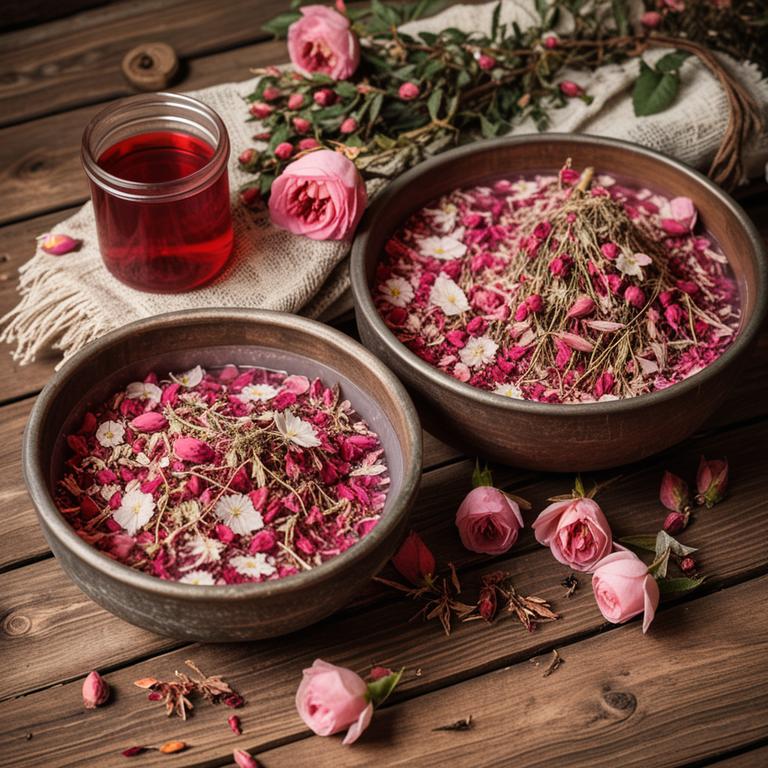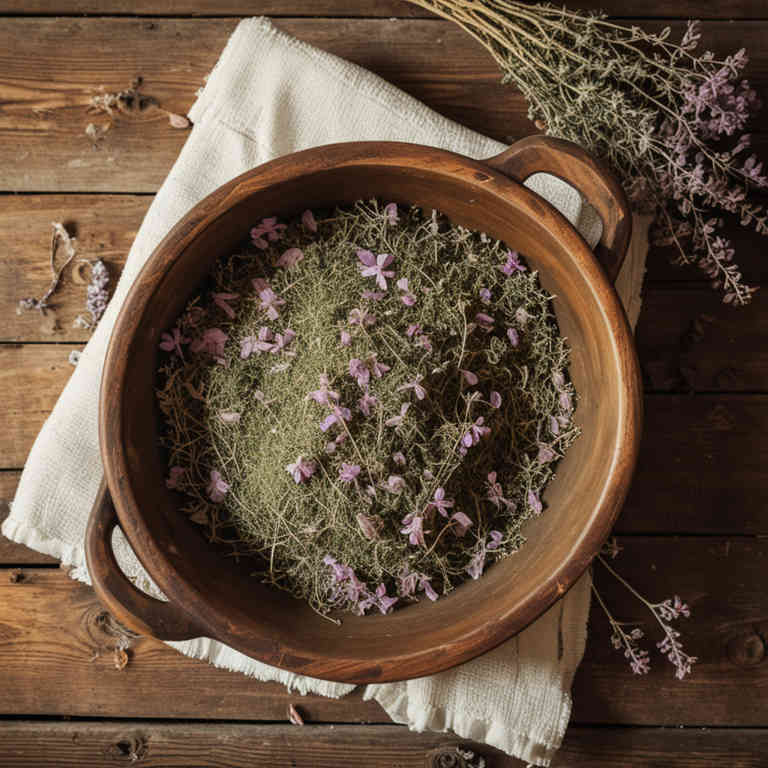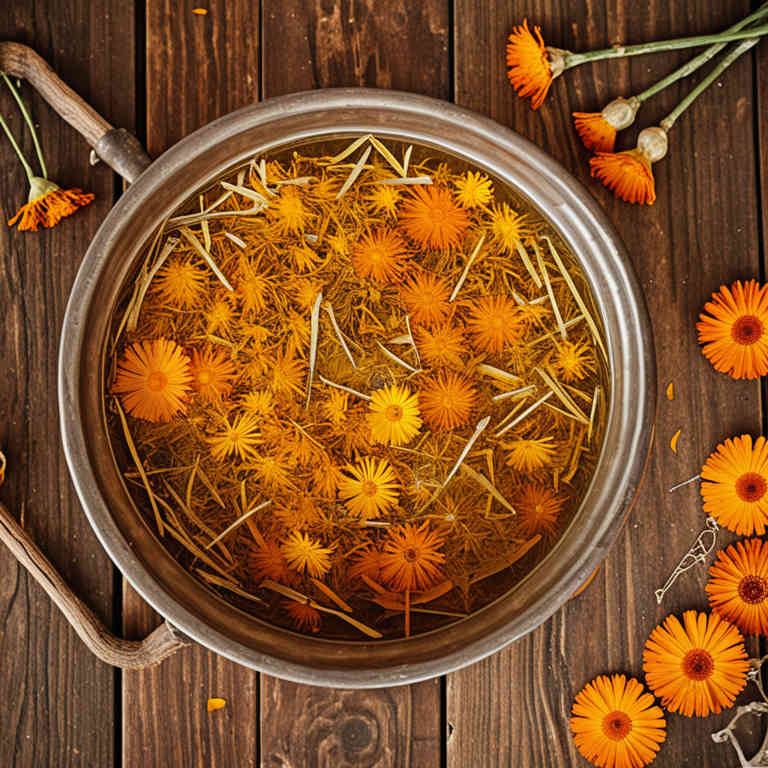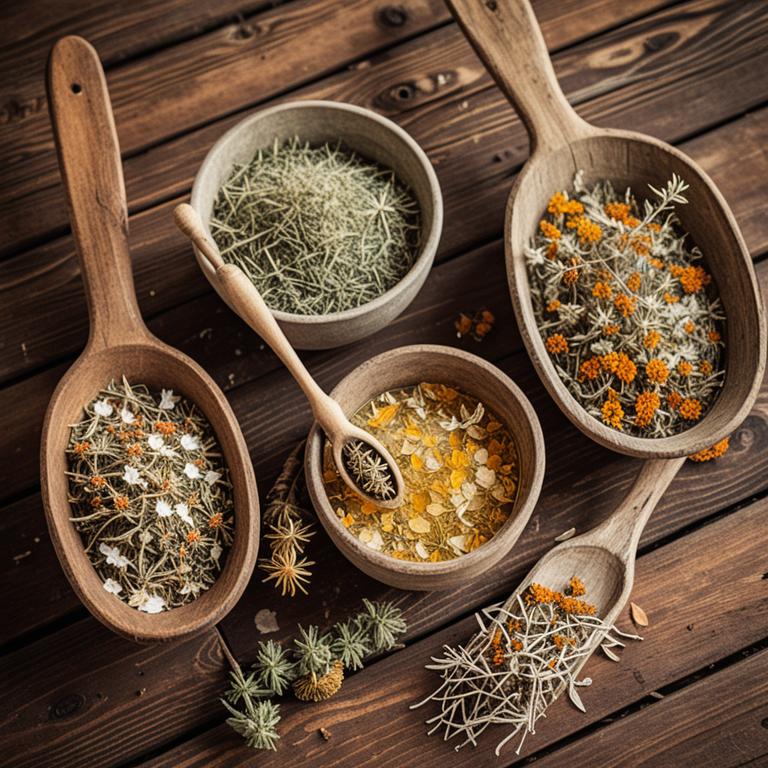10 Best Herbal Baths For Shingles

Herbal baths can be a soothing and effective complementary therapy for individuals suffering from shingles, a painful viral infection caused by the varicella-zoster virus.
Certain herbs, such as chamomile, lavender, and calendula, are known for their anti-inflammatory and calming properties, which may help reduce the intensity of pain and itching associated with shingles. Soaking in a warm herbal bath can also promote relaxation and ease the stress that often accompanies the condition. To prepare an herbal bath, infuse dried herbs in hot water and then add the solution to a tub filled with warm water, ensuring the skin is gently covered.
While herbal baths should not replace medical treatment, they can provide relief and support the healing process when used alongside prescribed therapies.
FREE Herb Drying Checklist
How to make sure every batch retains maximum flavor, color, and aroma without the risk of mold or over-drying. Eliminate guesswork and trial-and-error, making herb drying faster, easier, and more efficient every time.
Table of Contents
1. Hypericum perforatum

Hypericum perforatum, commonly known as St. John's wort, has been traditionally used in herbal baths for its potential soothing properties, particularly for conditions like shingles.
When infused into warm water, the bath may help alleviate the pain and inflammation associated with shingles by promoting relaxation and reducing nerve irritation. The active compounds in St. John's wort, such as hypericin and hyperforin, are believed to have mild antiviral and anti-inflammatory effects that may support the healing process. However, it is important to consult a healthcare provider before using St. John's wort baths, as it can interact with certain medications.
While some individuals report relief from symptoms, scientific evidence supporting its efficacy for shingles remains limited.
2. Urtica dioica

Urtica dioica, commonly known as stinging nettle, has been traditionally used in herbal baths for its anti-inflammatory and soothing properties, which may help alleviate the pain and discomfort associated with shingles.
When infused into warm water, stinging nettle can help reduce skin irritation and promote healing by calming the nervous system and reducing viral inflammation. The high concentration of silica and minerals in nettle leaves supports skin regeneration and can ease the burning, tingling, and itching symptoms of shingles. Herbal baths with urtica dioica are often recommended as a complementary therapy alongside conventional treatments for a more holistic approach to managing the condition.
However, it is important to consult with a healthcare provider before using any herbal remedies, especially for those with sensitive skin or existing medical conditions.
3. Achillea millefolium

Achillea millefolium, commonly known as yarrow, has been traditionally used in herbal medicine for its anti-inflammatory and antiseptic properties.
When used in herbal baths for shingles, yarrow can help soothe the skin and reduce the intense pain and inflammation associated with the condition. To prepare the bath, dried yarrow herb is steeped in hot water to create a potent infusion, which is then added to warm bathwater. The soothing warmth of the bath can provide relief by promoting circulation and easing the discomfort of shingles.
Regular use of yarrow baths may support the healing process and offer a natural, complementary approach to managing shingles symptoms.
4. Lavandula angustifolia

Lavandula angustifolia, commonly known as English lavender, is often used in herbal baths for its soothing and anti-inflammatory properties, which can provide relief for individuals suffering from shingles.
The essential oils and phytochemicals in lavender help reduce skin irritation, itching, and pain associated with shingles by calming the nervous system and promoting relaxation. Adding a few drops of lavender essential oil to a warm bath can enhance the therapeutic effects, offering a natural and calming remedy. This method is particularly beneficial for those seeking a non-invasive, holistic approach to managing shingles symptoms.
However, it is important to consult a healthcare professional before using lavender baths, especially if there are underlying skin conditions or allergies.
5. Rosa canina

Rosa canina, also known as dog rose, is a traditional herbal remedy often used in baths to support the treatment of shingles, a painful rash caused by the varicella-zoster virus.
The anti-inflammatory and soothing properties of Rosa canina flowers help alleviate the burning and itching associated with shingles, promoting skin healing and reducing discomfort. These herbal baths are typically prepared by steeping dried Rosa canina flowers in hot water and then using the infusion to bathe the affected area. While not a substitute for medical treatment, Rosa canina baths can be a complementary therapy to ease symptoms and enhance recovery.
Regular use of these baths may also help reduce the risk of secondary infections and support overall skin health during the shingles outbreak.
6. Rosmarinus officinalis

Rosmarinus officinalis, commonly known as rosemary, has been traditionally used in herbal baths for its potential therapeutic benefits, including its antiviral and anti-inflammatory properties.
When infused into bath water, rosemary can help soothe the skin and may provide relief from the pain and discomfort associated with shingles. The aromatic compounds in rosemary are believed to promote relaxation and reduce stress, which can support the body's healing process. However, it is important to ensure that the bath temperature is not too hot and that the skin is not irritated, as some individuals may be sensitive to rosemary extracts.
While herbal baths can be a complementary remedy, they should not replace professional medical treatment for shingles, especially in severe cases.
7. Thymus vulgaris

Thymus vulgaris, commonly known as thyme, has been traditionally used in herbal baths for its antiseptic and soothing properties, which may help alleviate symptoms associated with shingles.
When infused into warm water, thyme can provide a calming effect on the skin, reducing inflammation and promoting healing in the affected areas. The essential oils in thyme, particularly thymol, have antimicrobial qualities that may help prevent secondary infections in shingles blisters. However, it is important to dilute thyme essential oil properly to avoid skin irritation, as it can be quite potent.
While herbal baths may offer some relief, they should not replace medical treatment for shingles, and individuals should consult a healthcare provider for proper care.
8. Calendula officinalis

Calendula officinalis, commonly known as pot marigold, is often used in herbal baths for its anti-inflammatory and soothing properties, making it a popular choice for managing symptoms of shingles.
When added to warm water, calendula can help reduce skin irritation, redness, and pain associated with shingles by promoting healing and easing discomfort. Its antimicrobial qualities may also help prevent secondary infections in the affected areas. A calming herbal bath with calendula can be a gentle, natural remedy to support the body's recovery process.
However, it is important to consult with a healthcare provider before using calendula baths, especially for individuals with known allergies or sensitive skin.
9. Salvia officinalis

Salvia officinalis, commonly known as sage, has been traditionally used in herbal baths for its soothing and antiseptic properties, which may offer relief for shingles.
When infused into bath water, sage can help reduce skin irritation and inflammation associated with shingles, thanks to its high concentration of essential oils and antioxidants. The warm water of the bath also promotes relaxation and can ease the discomfort of nerve pain caused by the varicella-zoster virus. However, it is important to ensure that the sage infusion is properly diluted to avoid skin irritation, especially for those with sensitive skin.
While sage baths may complement conventional treatments, they should not replace medical advice or prescribed therapies for managing shingles.
10. Sutherlandia frutescens

Sutherlandia frutescens, also known as the "cancer bush," is traditionally used in African herbal medicine for its purported anti-inflammatory and immune-supporting properties.
While it is not a cure for shingles, some practitioners suggest using Sutherlandia frutescens herbal baths as a complementary therapy to alleviate symptoms such as pain and skin irritation associated with the condition. To prepare the bath, a decoction of the dried plant is typically infused in warm water, allowing the active compounds to be absorbed through the skin. These baths may help reduce inflammation and promote a sense of relaxation, though they should not replace conventional medical treatments for shingles.
It is important to consult with a healthcare professional before using any herbal remedy, especially during an active infection.